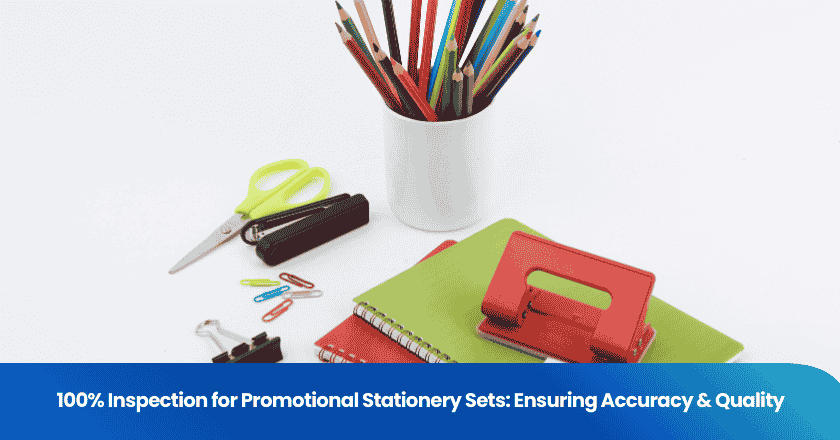
Sustainable sourcing apparel refers to a procurement strategy that ensures minimal environmental impact, maximizes social responsibility, and is economically viable throughout the entire lifecycle of the apparel product, from design to production and final consumption. This includes selecting environmentally friendly materials, optimizing production processes, reducing waste emissions, and ensuring fair treatment and rights for all participants in the supply chain.
With the increasing awareness of environmental protection globally and changes in consumer preferences, sustainability has become a crucial factor that cannot be overlooked in the fashion industry. It not only helps to reduce the pressure on the environment and enhance brand image, but also promotes the long-term stability of the supply chain and the sustainable development of enterprises.
This article aims to construct a comprehensive urban sourcing framework, which will center around the key principles of sustainable development, explore the challenges of sustainable sourcing apparel, formulate sourcing strategies, and ultimately guide implementation and continuous improvement.
Understand sustainable sourcing apparel
Sourcing apparel in a sustainable manner is a crucial aspect of the fashion industry's transition towards a more environmentally friendly, socially responsible, and economically beneficial direction. To gain a deeper understanding of this concept, we need to explore the key principles behind it and the challenges we face.
The key principles of sustainable development
Sustainable development is reflected in sourcing apparel as a comprehensive consideration of environmental, social, and economic aspects.
Environmental factors
Environmental factors are one of the core concerns in sustainable sourcing apparel. This requires enterprises to strictly focus on energy consumption, water resource management, waste disposal, and the use of chemical substances when selecting suppliers and during the production process. By adopting energy-saving technologies, optimizing water resource utilization, implementing waste recycling and reuse, and choosing environmentally friendly chemical substances, enterprises can significantly reduce the negative impact on the environment while enhancing their brand image and market competitiveness.
Social Responsibility
In addition to environmental factors, social responsibility is also an indispensable part of sustainable sourcing apparel. This includes ensuring that workers' rights and interests in the supply chain are fully protected, such as providing reasonable wages, creating a safe working environment, and resolutely avoiding the use of child labor. Enterprises should establish close cooperative relationships with suppliers to jointly promote the implementation of social responsibility, thereby ensuring the sustainability and stability of the entire supply chain.
Economic feasibility
While pursuing sustainability, economic feasibility is also a crucial factor that enterprises must consider. Sourcing apparel does not mean sacrificing economic benefits, but rather achieving economic sustainability through optimizing processes, reducing costs, and improving efficiency. This requires enterprises to possess keen market insight and innovative thinking, continuously exploring new procurement models and cooperation methods, in order to maintain profitability while achieving sustainable development goals.
The Challenge of Sourcing Apparel Sustainably
Despite the numerous advantages of sourcing apparel sustainably, enterprises still face many challenges in the actual operation process.
Supply chain complexity
The global supply chain involves multiple links and participants, which greatly increases the difficulty of management and monitoring. To ensure the sustainability and stability of the supply chain, enterprises need to establish a comprehensive supply chain management system, strengthen communication and collaboration with suppliers, and jointly address various risks and challenges.
Cost impact
The initial investment in sourcing apparel may be high, including costs for adopting environmental technologies, improving worker treatment, and enhancing supply chain transparency. However, companies need to balance long-term benefits with short-term costs, and reduce costs by continuously optimizing procurement strategies and improving efficiency, in order to achieve a win-win situation of sustainable development and economic benefits.
Regulatory Compliance
The differences in regulations across different countries and regions also pose challenges for sustainable sourcing apparel. Companies need to have a high degree of compliance awareness and ability, understand and adhere to relevant regulations and standards, to ensure the legality and sustainability of their procurement activities. This requires companies to strengthen communication and cooperation with governments, industry associations, and other institutions, to jointly promote the development of sustainable sourcing apparel.
Develop a sourcing framework for apparel
In order to effectively implement sustainable sourcing apparel, enterprises need to build a comprehensive and systematic procurement framework. This framework should be based on in-depth research and analysis, clear strategic planning, as well as reasonable resource allocation and timeline arrangement.
Research and Analysis
Before establishing a sourcing framework, enterprises must conduct thorough research and analysis to ensure the scientific and rational nature of the sourcing strategy.
Market trends
Firstly, enterprises need to conduct an in-depth analysis of consumer demand, industry trends, and competitive dynamics. Through market research, consumer interviews, and data analysis, enterprises can understand changes in consumer preferences, the latest developments in the industry, and the strategies of competitors, thus providing a strong basis for the formulation of sourcing strategies. This helps enterprises seize market opportunities and avoid blind sourcing and resource waste.
Supplier evaluation
Secondly, establishing a supplier evaluation system is an important part of formulating a sourcing framework. Enterprises should consider various factors such as suppliers' environmental performance, social responsibility, and economic strength to conduct a comprehensive evaluation of suppliers. Through on-site inspections, questionnaire surveys, and third-party certification, enterprises can obtain the true situation of suppliers, thereby selecting high-quality suppliers that meet the requirements of sustainable development. This helps ensure the sustainability and stability of sourcing activities.
Risk assessment
In addition, enterprises need to identify potential risks in the supply chain, such as supply chain disruptions, quality issues, and compliance issues. Through risk assessment, enterprises can understand the weak links and potential threats in the supply chain, and take corresponding risk mitigation measures. This helps to reduce sourcing costs, improve sourcing efficiency, and ensure the smooth progress of sourcing activities.
Strategic Planning
After completing research and analysis, the enterprise needs to formulate a clear strategic plan to guide the implementation of the sourcing apparel framework.
Set goals
Firstly, based on the corporate vision and sustainable development goals, set specific sourcing objectives. These objectives should be clear, measurable, and aligned with the overall strategy of the company. By setting objectives, the company can clarify the direction and focus of procurement activities, thereby formulating procurement strategies more specifically.
Resource allocation
Secondly, the rational allocation of human, financial, and material resources is an important guarantee for implementing sourcing strategies. Enterprises should allocate resources reasonably according to sourcing objectives and strategic planning to ensure the smooth progress of sourcing activities. This includes establishing a professional sourcing team, providing sufficient financial support, and equipping with necessary sourcing equipment. Through reasonable resource allocation, enterprises can improve sourcing efficiency, reduce sourcing costs, and achieve sustainable development goals.
Timeline development
Finally, developing a detailed timeline is crucial to ensure that sourcing activities proceed as planned. Enterprises should establish a detailed timeline based on procurement goals and strategic planning, clarifying the start and end times as well as key milestones for each procurement activity. Through the development of a timeline, enterprises can monitor the progress of procurement activities, promptly identify and solve problems, thereby ensuring the smooth and timely completion of procurement activities.
Implementing the framework
After establishing a comprehensive sourcing framework, the key lies in effectively implementing this framework to ensure that it can truly promote the achievement of sustainable development goals. This requires enterprises to make efforts in implementing strategies and continuous improvement.
Implementing the strategy
In order to effectively implement the sourcing framework, enterprises need to adopt a series of specific execution strategies.
Supplier collaboration
Establishing a close partnership with suppliers is crucial for implementing strategies. Enterprises should actively communicate with suppliers to jointly define sustainable development goals and collaborate in formulating specific implementation plans. By sharing resources, technology, and experience, enterprises and suppliers can jointly promote the achievement of sustainable development goals while improving the efficiency and quality of sourcing activities.
Technology integration
Utilizing information technology to optimize the sourcing apparel process is an effective way to enhance efficiency and transparency. Enterprises can introduce advanced procurement management systems to achieve automation and digitization of the sourcing apparel process. Through the integration of information technology, enterprises can track the progress of sourcing activities in real time, promptly identify and solve problems, thereby improving sourcing efficiency and accuracy. At the same time, information technology can also help enterprises better manage supplier information and enhance supply chain transparency.
Monitoring and evaluation
Regularly monitoring the progress and effectiveness of sourcing activities is an important means to ensure the effective implementation of the procurement framework. Enterprises should establish a monitoring and evaluation mechanism, regularly review and summarize sourcing activities, analyze existing problems and deficiencies, and adjust strategies in a timely manner. Through monitoring and evaluation, enterprises can continuously optimize the sourcing process, improve sourcing efficiency and quality, and thus better achieve sustainable development goals.
Continuous improvement in sourcing apparel
Continuous improvement is the key to driving the continuous improvement and optimization of the sourcing apparel framework.
Feedback mechanism
Establishing an effective feedback mechanism is the foundation for continuous improvement. Enterprises should actively collect opinions and suggestions from various links in the supply chain, including suppliers, sourcing teams, production departments, etc. Through the feedback mechanism, enterprises can timely understand the problems and deficiencies in procurement activities, so as to make targeted improvements and optimizations. At the same time, the feedback mechanism can also help enterprises better understand market demand and consumer preferences, providing a strong basis for the formulation of procurement strategies.
Innovation and Adaptation
Encouraging innovative thinking and flexible response to market changes are important aspects of continuous improvement. Enterprises should encourage their sourcing teams and suppliers to actively try new sourcing models and technological means to continuously improve sourcing efficiency and quality. At the same time, enterprises should also pay close attention to market changes and sustainable development challenges, flexibly adjusting sourcing strategies and goals to ensure that sourcing activities always align with market demands and sustainable development requirements.
Performance indicators
Setting clear performance indicators is crucial for measuring the sustainability and effectiveness of sourcing activities. Enterprises should establish specific performance indicators based on sustainable development goals and procurement strategies, such as the reduction ratio of procurement costs, supplier environmental performance scores, and transparency of procurement activities. By regularly evaluating these performance indicators, enterprises can understand the actual effects and existing problems of procurement activities, so as to adjust strategies and goals in a timely manner, and promote the continuous improvement and optimization of the procurement framework.
END
This article discusses the importance, key principles, challenges faced, and steps for developing and implementing a sourcing framework for sustainable sourcing apparel. By comprehensively considering environmental factors, social responsibility, and economic feasibility, companies can build a more sustainable and efficient sourcing system.
In the rapidly changing market environment, enterprises need to maintain a high degree of adaptability, continuously adjust and optimize their sourcing strategies to respond to new challenges and opportunities.
In order to achieve long-term prosperity in the fashion industry and sustainable development of the planet, we call on all enterprises to adopt sustainable sourcing practices and jointly promote the green transformation of the industry. Through collective efforts, we can leave a better and more sustainable world for future generations.
Grow your business with TradeAider Service
Click the button below to directly enter the TradeAider Service System. The simple steps from booking and payment to receiving reports are easy to operate.



